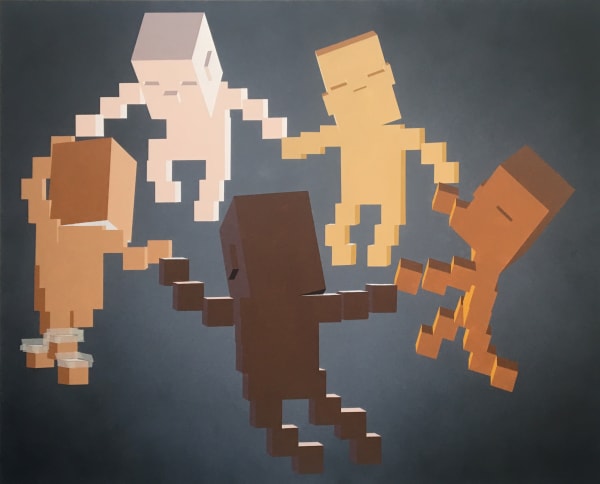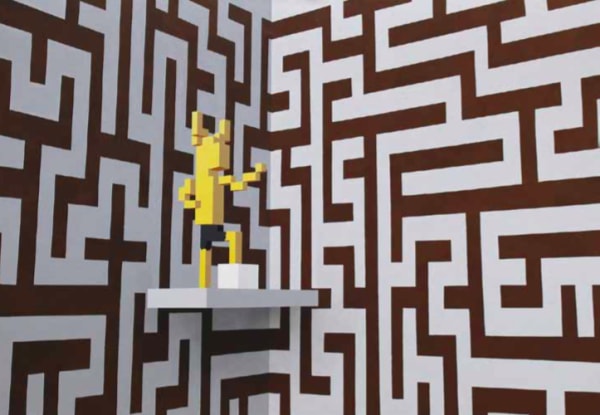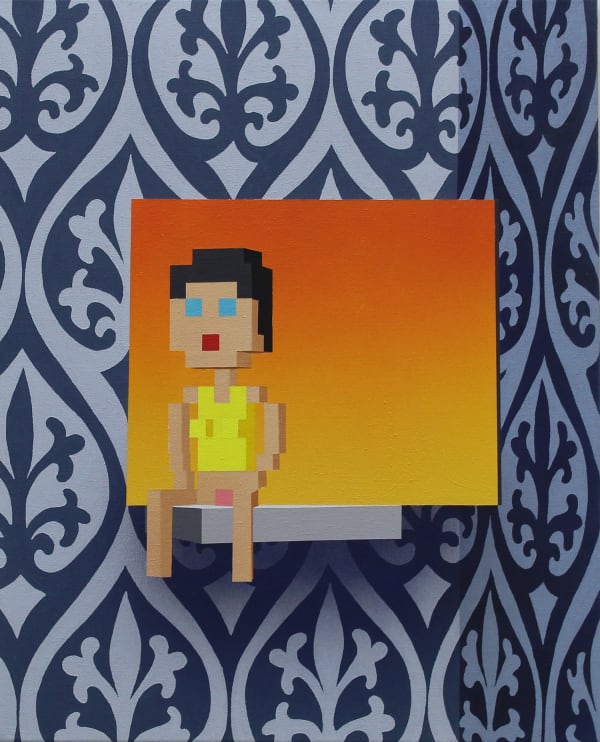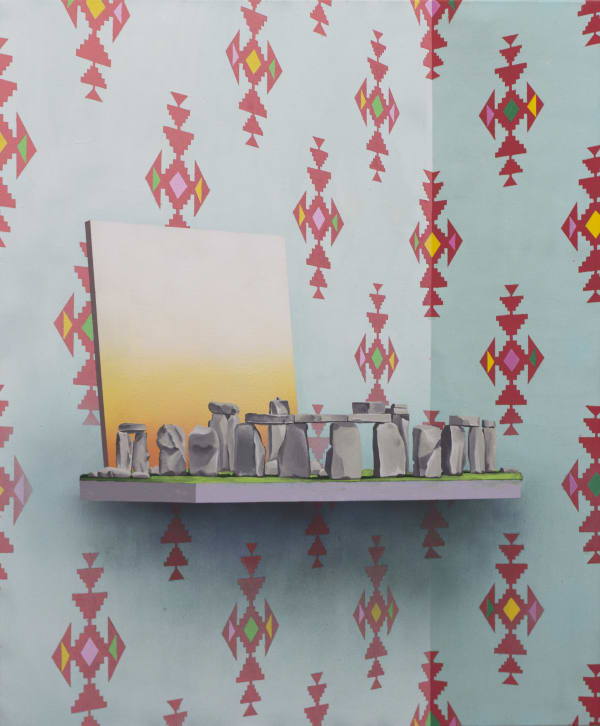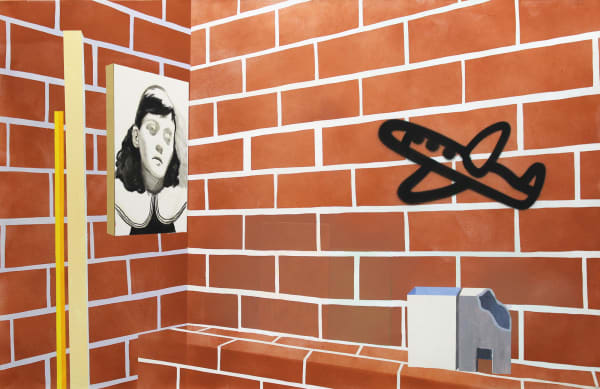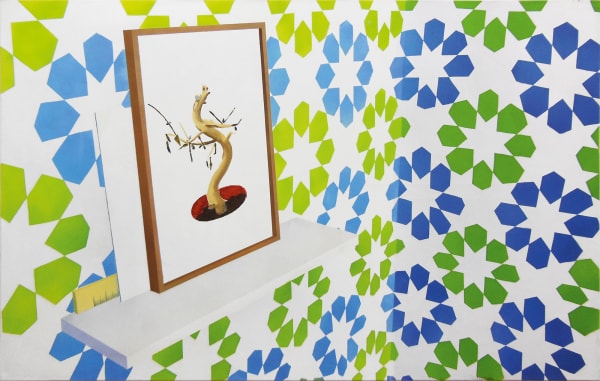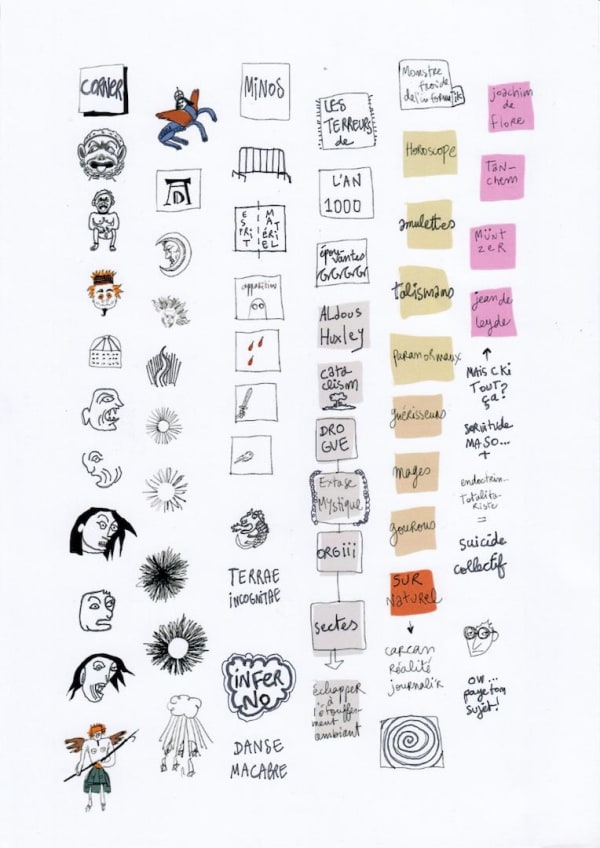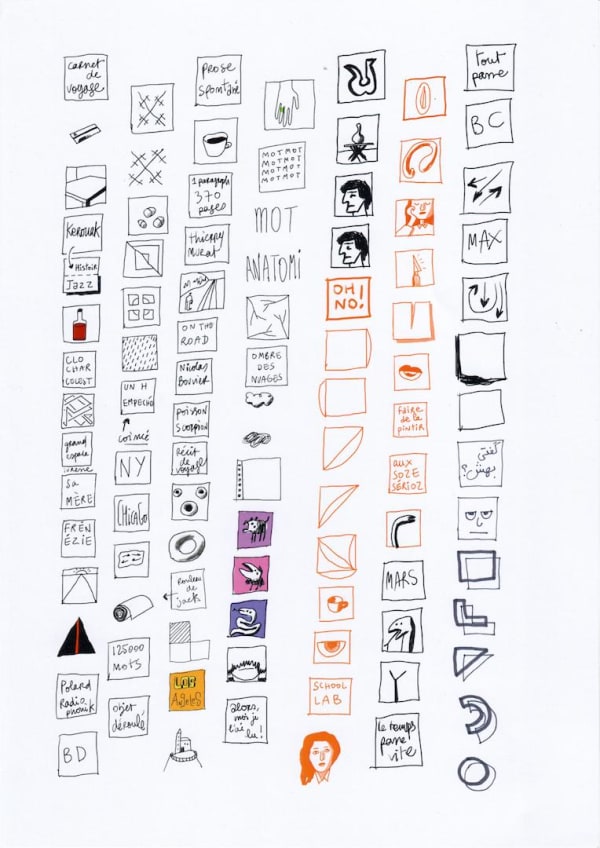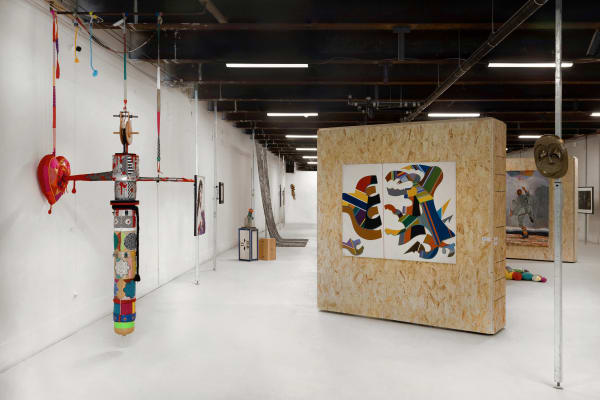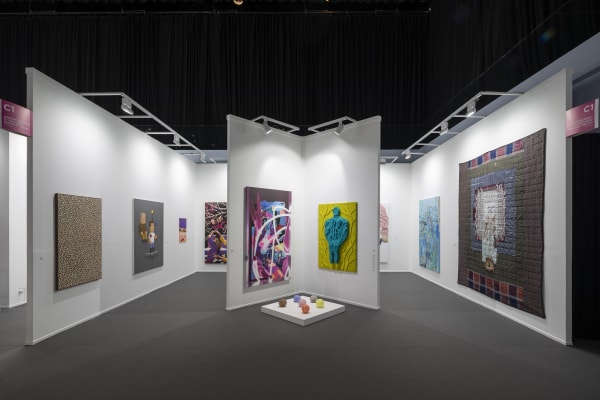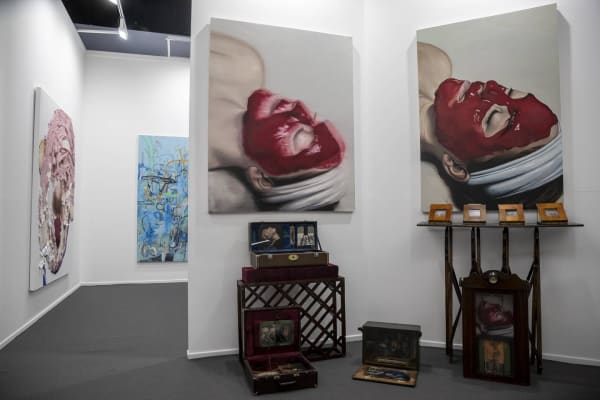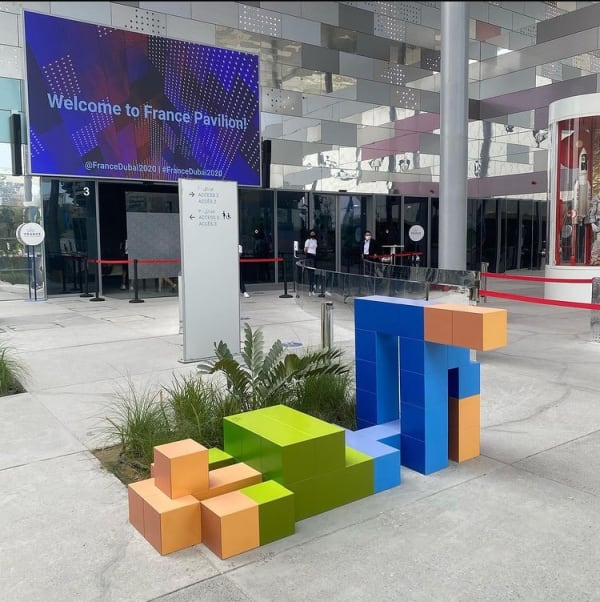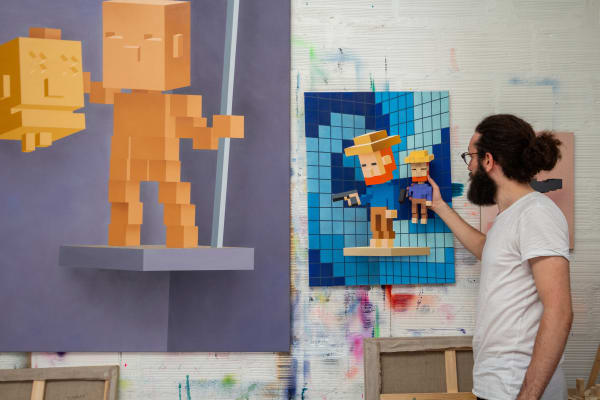Sepand Danesh Iranian, b. 1984
Works of Sepand Danesh stand at the crossroads of art and technology. He looks at the world through a pixelated filter – elements and figures in his paintings are made of squares/cubes in an Euclidian geometry of surfaces. These paintings start in the corner of a space with no ceiling or floor. A vertical shelf where various elements and figures make a show is suspended between perpendicular lines. He uses drawing, painting, and workshops to burst ideas about the dynamic of the Hub. His paintings represent the optical illusion of an inside corner (as the metaphor of impediment) without a floor or ceiling, which shelters his intimate and the world's broader memory.
-

Art Basel Hong Kong 2025 | Group Presentation
Hong Kong 26 - 30 Mar 2025 Art FairsA Group of works by Reza Aramesh, Pooya Aryanpour, Sepand Danesh, Bita Fayyazi, Farrokh Mahdavi, Meghdad Lorpour, Farah Ossouli, Asal Peirovi, and Morteza Pourhosseini. Booth : 3C39 Date : March...Read more -

Group Presentation | "Soft Edge of the Blade Vol. 2"
Zaal Art Gallery 28 Oct 2023 - 25 May 2024 ZaalA Group Peresentation of works by Iranian Contemporary Artists. Reza Abedini, Nasser Bakhshi, Homa Delvaray. Hoda Kashiha, Reza Aramesh, Kiarash Alimi, Mohsen Vaziri Moghaddam, Behjat Sadr, Kour Pour, Sina Ghadaksaz,...Read more -

Group Presentation | "Soft Edge of the Blade Vol. 2"
Art Toronto 2023 26 - 29 Oct 2023 Art FairsBooth: A10 Preview Date: 26 October, 2023 Date: 26-29 October, 2023 Location : Toronto Address: Metro Toronto Convention Centre, North Building, 255 Front Street West, TorontoRead more -

Group Presentation
The Armory Show 2023 7 - 10 Sep 2023 Art FairsA Group Presentation of Works by Reza Aramesh, Andisheh Avini, Homa Delvaray, Mehdi Ghadyanloo, Hoda Kashiha, Farrokh Mahdavi, Nicky Nodjoumi, Asal Peirovi, Sepand Danesh, Mamali Shafahi, and Reza Shafahi, as...Read more -

Group presentation
Art Dubai 2022 11 - 13 Mar 2022 Art FairsDastan is pleased to announce its participation at Art Dubai 2022 with a presentation of works by Fereydoun Ave, Andisheh Avini, Nasser Bakhshi, Yousha Bashir, Sepand Danesh, Maryam Eivazi, Mohammad...Read more -

Asia Now 2021
+2 21 - 24 Oct 2021 Art Fairs+2 Gallery is pleased to present a group presentation of works by Reza Aramesh, Andisheh Avini, Niyaz Azadikhah, Nasser Bakhshi, Sadra Baniasadi, Sina Choopnai, Sepand Danesh, Niki Fallahfar, Bita Fayyazi,...Read more -

Asal Peirovi, Sepand Danesh, and Mehdi Ghadyanloo
ART021 2020 12 - 15 Nov 2020 Art FairsDastan is pleased to announce its second participation at ART021 with a presentation of works by Asal Peirovi, Sepand Danesh, and Mehdi Ghadyanloo at booth E31. This presentation features a...Read more -

Preview London #2
Dastan's Basement 15 - 31 May 2020Explore works by Sam Samiee and Sepand Danesh at “Preview London#2” organized by Beadvisors art. The exhibition is on view until May 31st on https://www.artland.com/viewing-rooms/cka6j0o5t6mji0771jp0zx1jx Participant galleries: Bosse & Baum...Read more -

Sepand Danesh | "Introduction to the Hub"
Dastan's Basement 21 Jun - 12 Jul 2019 The BasementA solo presentation of works by Sepand Danesh at Dastan's BasementRead more -

''Le Gymnasium Sacre''
Art Dubai 2019 20 - 23 Mar 2019 Art FairsA Presentation by Dastan at Booth C2, Art Dubai 2019Read more
-

Top 12 booths to see at Art Dubai as it returns home to Madinat Jumeirah for 2022
The National News March 11, 2022The National News also selects its prefered booths at Art Dubai 2022. Alexandra Chaves has this to say on Dastan’s Basement / +2 Gallery /...Read more -

The 8 Best Booths at Art Dubai
Art News March 9, 2022Emily Watlington writes for ARTnews on Dastan Gallery space at Art Dubai Art 2022, which the writer find the fair's biggest edition to-date, with over...Read more -

Iran Joins the Lineup at Asia Now
The New York Times October 21, 2021New York times covers the recent edition of Asia Now and the participation of Sepand Danesh and Hoda Kashiha among other Iranian artists, as they...Read more -

Sepand Danesh at Dubai World Expo 2020
Connaissance Des Arts October 8, 2021Connaissance Des Arts has recently published an article about Dubai World Expo 2020. Sepand Danesh has also created 25 sculptures for the French pavilion at...Read more -

VIDEO: Meeting with Sépànd Danesh for the France Pavilion of the Dubai Universal Expo
IDEAT Magazine April 26, 2021The IDEAT magazine talked to Sépànd Danesh who designed The France Pavilion of the next Dubai World Expo 2020. For more information in French click...Read more -

SÉPÀND DANESH, Art is a corner of creation
Anahita’s Eye June 5, 2019Anahita's Eye has recently published an interview with Sepand Danesh. Click here to read it in full.Read more
